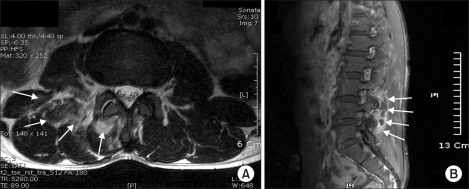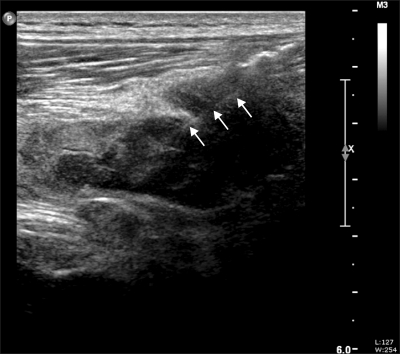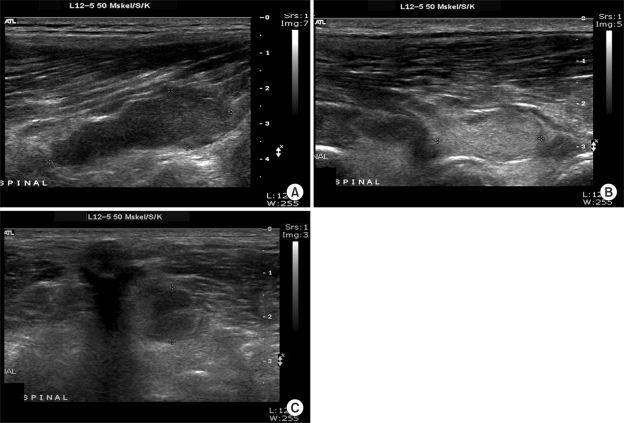Korean J Pain.
2010 Dec;23(4):270-273. 10.3344/kjp.2010.23.4.270.
Multiple Psoas Abscess Formation after Pharmacopuncture: A Case Report
- Affiliations
-
- 1Department of Anesthesiology and Pain Medicine, Korea University Guro Hospital, Seoul, Korea. clonidine@empal.com
- KMID: 1454713
- DOI: http://doi.org/10.3344/kjp.2010.23.4.270
Abstract
- Acupuncture has been widely used in alternative medicine for pain relief but may have many complications due to lack of appropriate cares. Pharmacopuncture is a sort of acupuncture that injects a herbal ingredient through a thin tube for the purpose of combining the effects of the herb and acupuncture and it has many pitfalls. The agents used in pharmacopuncture are not refined for a desired effect and not produced by sterile standard processes under strict medical surveillance. We report a case of a 44-yr-old male patient who had multiple abscesses in the psoas region with fever, right low back and hip pain that began after the pharmacopuncture treatment. This case shows that although pharmacopuncture has been practiced widely, it is important that the appropriate aseptic technique should be used to prevent severe infections and other complications.
Keyword
Figure
Reference
-
1. Rubinstein SM, van Middelkoop M, Kuijpers T, Ostelo R, Verhagen AP, de Boer MR, et al. A systematic review on the effectiveness of complementary and alternative medicine for chronic non-specific low-back pain. Eur Spine J. 2010; 19:1213–1228. PMID: 20229280.
Article2. Kang KS, Lee JS, Kwon GR. The clinical studies on the cases of side effect of CF herbal acupuncture. J Korean Pharmacopuncture Inst. 2001; 4:65–71.3. Park KH, Yoo TW. Evidence based acupuncture. Hanyang Med Rev. 2010; 30:91–102.
Article4. Witt CM, Pach D, Reinhold T, Wruck K, Brinkhaus B, Mank S, et al. Treatment of the adverse effects from acupuncture and their economic impact: A prospective study in 73,406 patients with low back or neck pain. Eur J Pain. 2010; [in press].5. Kim SY, Jang WI, Chung S, Choi DE, Na KR, Lee KW, et al. Perirenal hematoma induced by acupuncture and intramuscular stimulation. Korean J Nephrol. 2009; 28:146–151.6. Vittecoq D, Mettetal JF, Rouzioux C, Bach JF, Bouchon JP. Acute HIV infection after acupuncture treatments. N Engl J Med. 1989; 320:250–251. PMID: 2911312.
Article7. Walsh B. Control of infection in acupuncture. Acupunct Med. 2001; 19:109–111. PMID: 11829157.
Article8. Woo PC, Lin AW, Lau SK, Yuen KY. Acupuncture transmitted infections. BMJ. 2010; 340:c1268. PMID: 20299695.
Article9. Seeley EJ, Chambers HF. Diabetic ketoacidosis precipitated by Staphylococcus aureus abscess and bacteremia due to acupuncture: case report and review of the literature. Clin Infect Dis. 2006; 43:e6–e8. PMID: 16758409.10. Park CB, Kim KS, Shin JH, Suh GJ, Youn YK. Clinical presentations, diagnosis, and treatments of a psoas abscess. J Korean Soc Emerg Med. 2005; 16:346–351.




